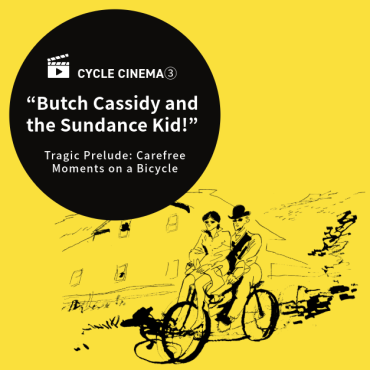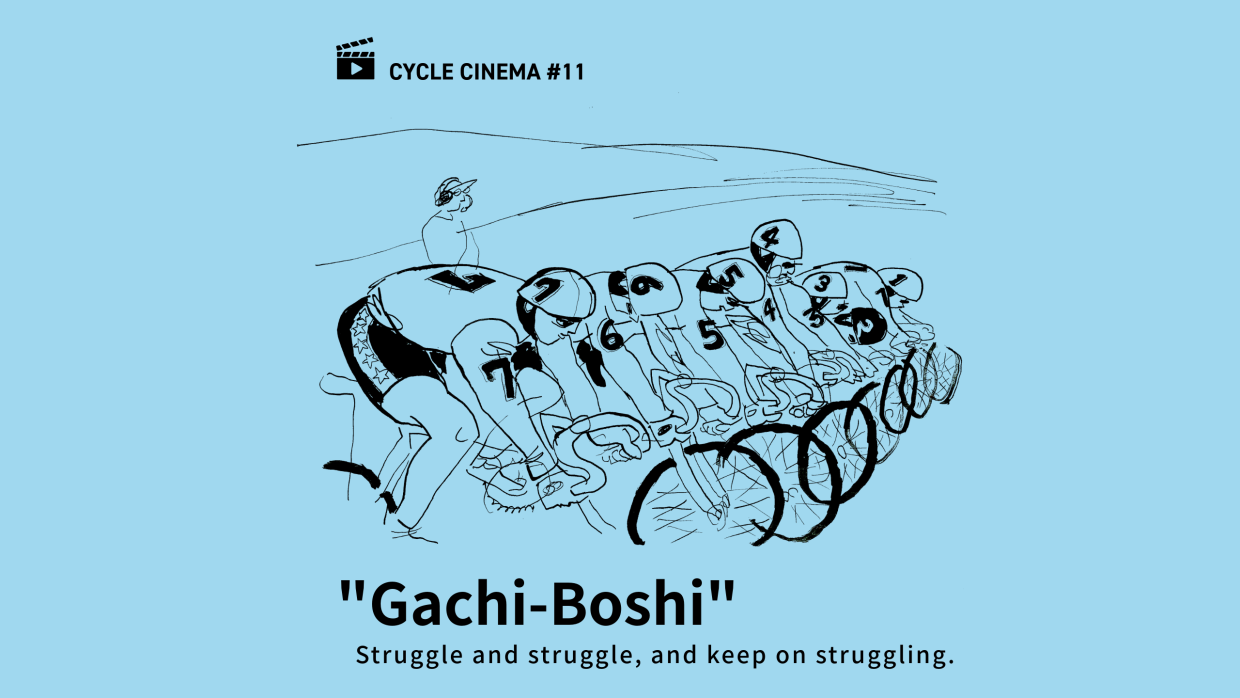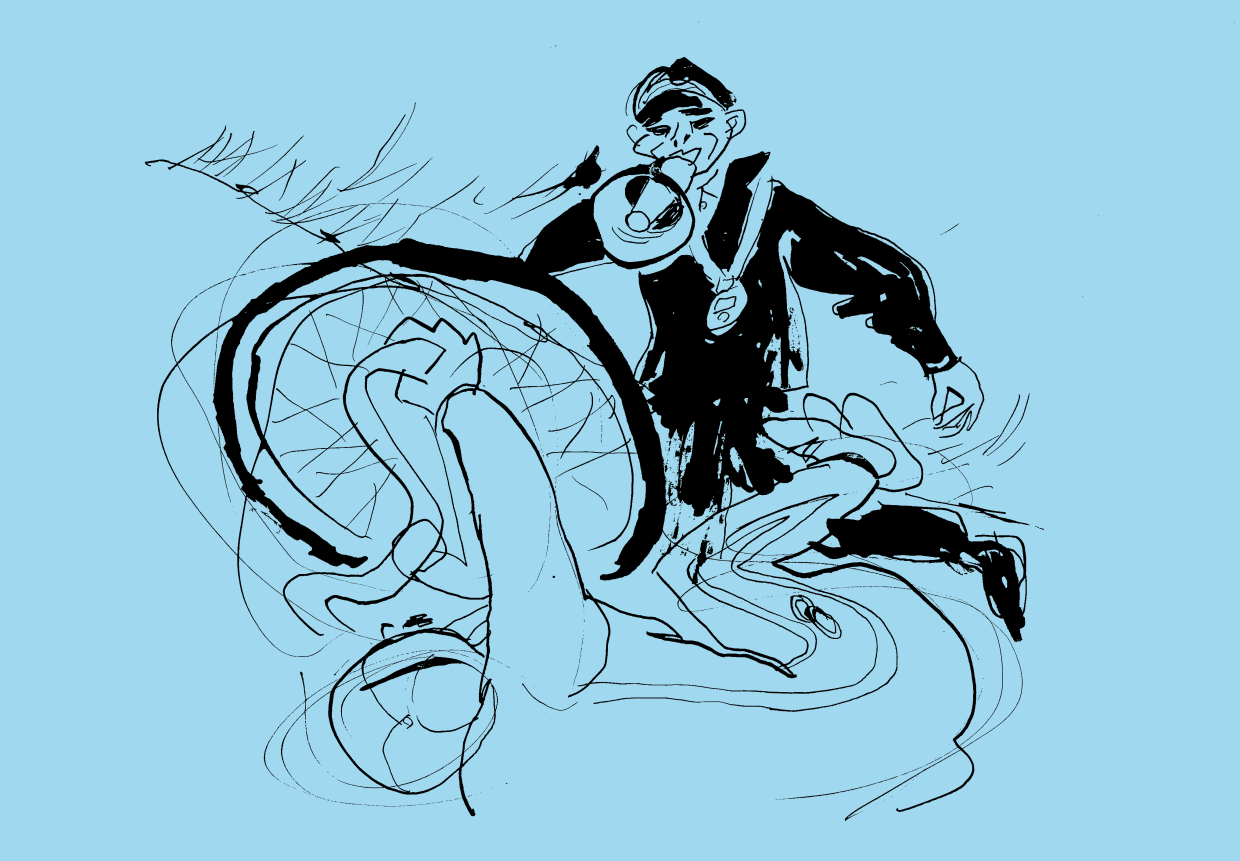
“Shoot for tomorrow!”(origin title “Butch Cassidy and the Sundance Kid”)
Tragic Prelude: Carefree Moments on a Bicycle

If you can find something to immerse yourself in life, wouldn’t that life be a success? Of course, it would be even better if you could make a living out of that immersion (in other words, doing what you love). Furthermore, it would be fantastic to rise to the top in that world. However, the world is tough. Despite striving from childhood and becoming a professional, it’s rare to be able to thrive in that world.
“Gachi-Boshi” (2017) is a story with the former professional baseball player Hamajima (Kenichi Abe) as the protagonist. While he was a baseball player, he wasn’t a professional in heart. He smoked, drank, and was disillusioned. One day, he received a notice of being released from the team, plunging further into a dissolute lifestyle. He becomes immersed in pachinko and alcohol, and even crosses the line with his best friend’s wife. He’s the epitome of a loser.”
This path leads straight to rock bottom. In a final desperate attempt, he turned to keirin racing (a type of track cycling race). Entering the keirin school at the age of 39, he faced grueling days of training alongside young riders over 20 years his junior. Despite being a former professional baseball player, his endurance was lacking due to his indulgence in alcohol and cigarettes, leading to ridicule from instructors and fellow students. In the midst of this, Hamajima encounters Hisamatsu, a classmate from the same hometown. When Hamajima asks why he’s so committed, Hisamatsu replies, ‘It’s all I’ve got.’ Hisamatsu had his own reasons for needing to turn pro. Inspired by Hisamatsu’s spirit, Hamajima starts pedaling vigorously to reclaim his lost self, eventually managing to turn pro.
However, even after becoming a pro, Hamajima remained stagnant. People don’t change overnight. He was like a man who seemed to prove that a scoundrel remains a scoundrel forever. However, triggered by a major incident, Hamajima reaches a kind of enlightenment. He stops on the road, questions himself, accepts responsibility, realizes what he can do at that moment, and shouts, “I got it!” He acknowledges his own weakness. He resolves to challenge himself yet again. This scene is powerful. It reminds me of the scene in the movie ‘JOKER’ where he dances on the stairs, portraying the moment when Arthur transforms into Joker through a few seconds of dance. It’s a memorable scene, and it brought back memories of the moment when a scoundrel of a keirin rider became a professional keirin rider.
In the scenes of keirin training, the instructors keep telling the riders to “struggle, struggle.” When you stop struggling (pedaling), the bicycle loses speed and eventually falls. Perhaps being a pro is about the time spent struggling. When people stop struggling, their speed drops, and they withdraw from that world. This movie teaches us the importance of struggling; when you stop struggling to pedal, you lose speed and eventually fall. It emphasizes that the time we spend struggling is precious. When you finish watching it, you’ll feel an intense desire to pedal furiously, to struggle. “Gachi-Boshi” is that kind of movie.

🎬CYCLE CINEMA STORAGE🎬
#01 “The Bicycle Thief”
#02 “Project A”
#03 “Shoot for tomorrow!”(origin title “Butch Cassidy and the Sundance Kid”)
#04 “The Kid With a Bike (Le gamin au vélo)”
#05 “Izakaya Choji”
#06 “Cinema Paradiso”
#07 “Kids Return”
#08 “PERFECT DAYS”
#09 “Kramer vs. Kramer”
#10 “E.T.”
#11 “Gachi-Boshi”
#12 “Yesterday”
#13 “Wadjda”
#14 “The Zone of Interest”
#15 “Anselm”
#16 “Otoko wa Turai yo”
Profile

Text_Hideki Inoue
I am from Amagasaki City, Hyogo Prefecture, Japan. I work as a writer and editor. My hobbies include hot baths, skiing, and fishing. Although I have no personal connection, I am independently conducting research on Shiga Prefecture. I prefer an active fishing style called “RUN & GUN,” which involves moving around actively instead of staying in one place. Purchasing a car to transport bicycles for this style of cycling seems like putting the cart before the horse.
Illusutration_Michiharu Saotome
Post Date:2024.07.02